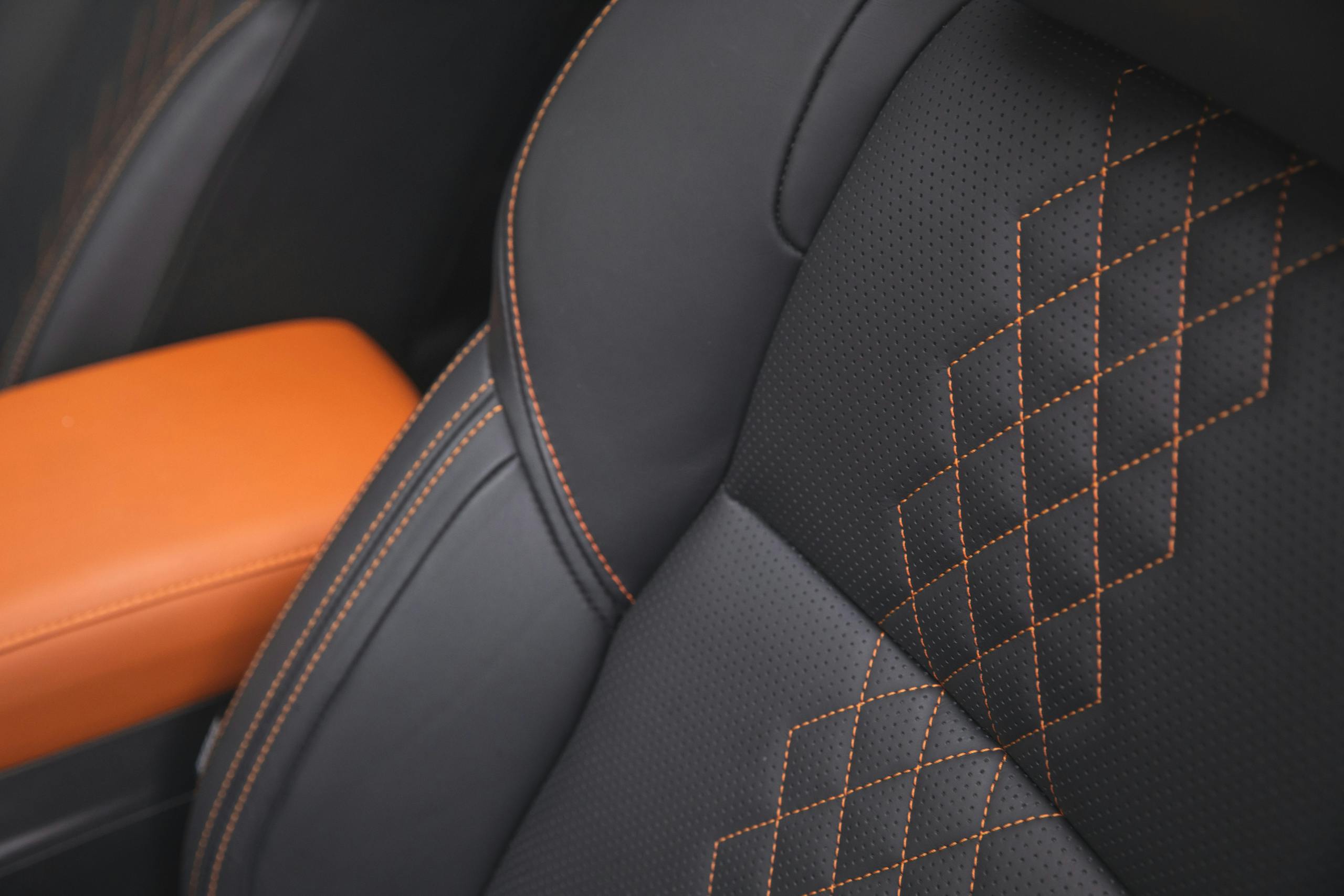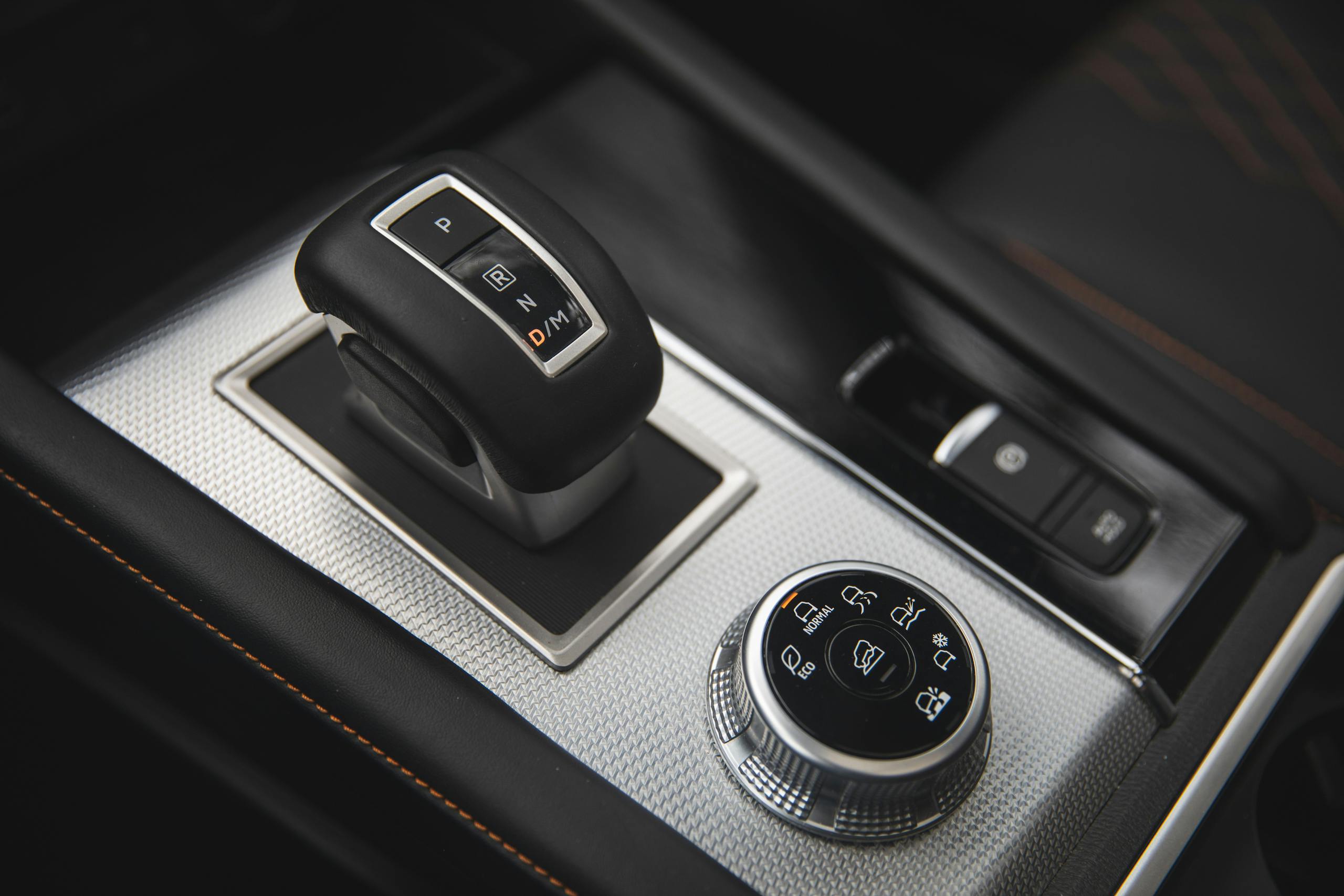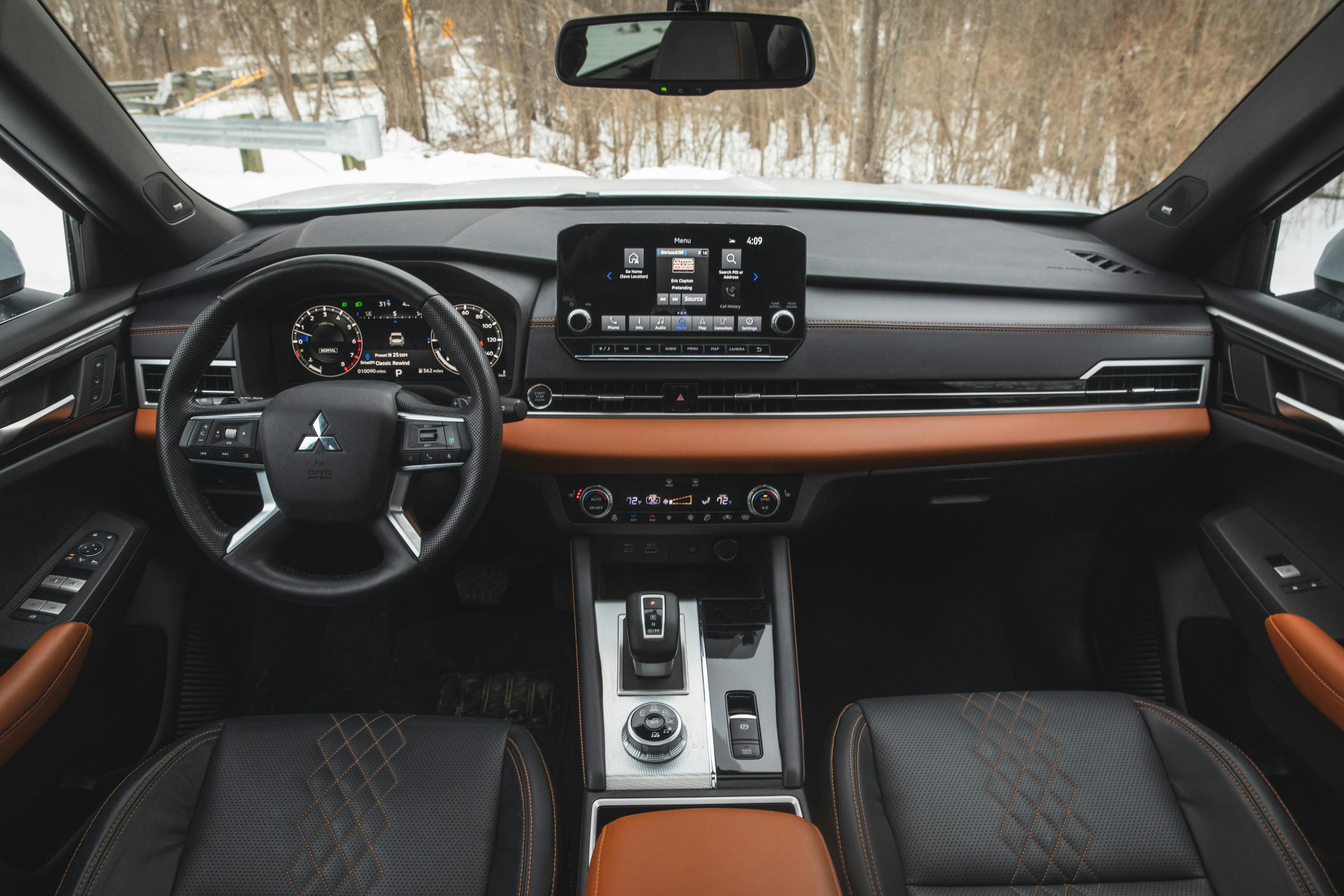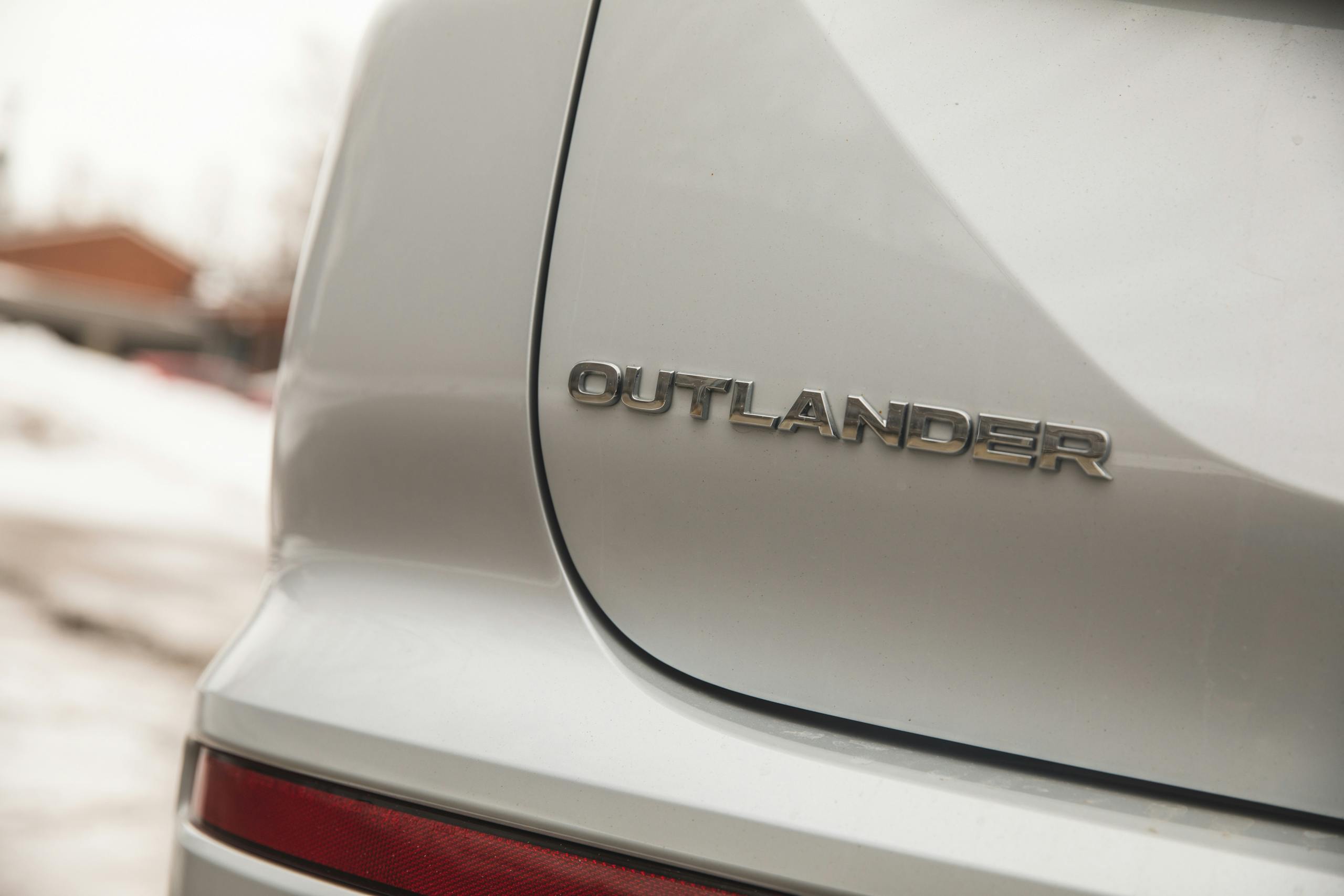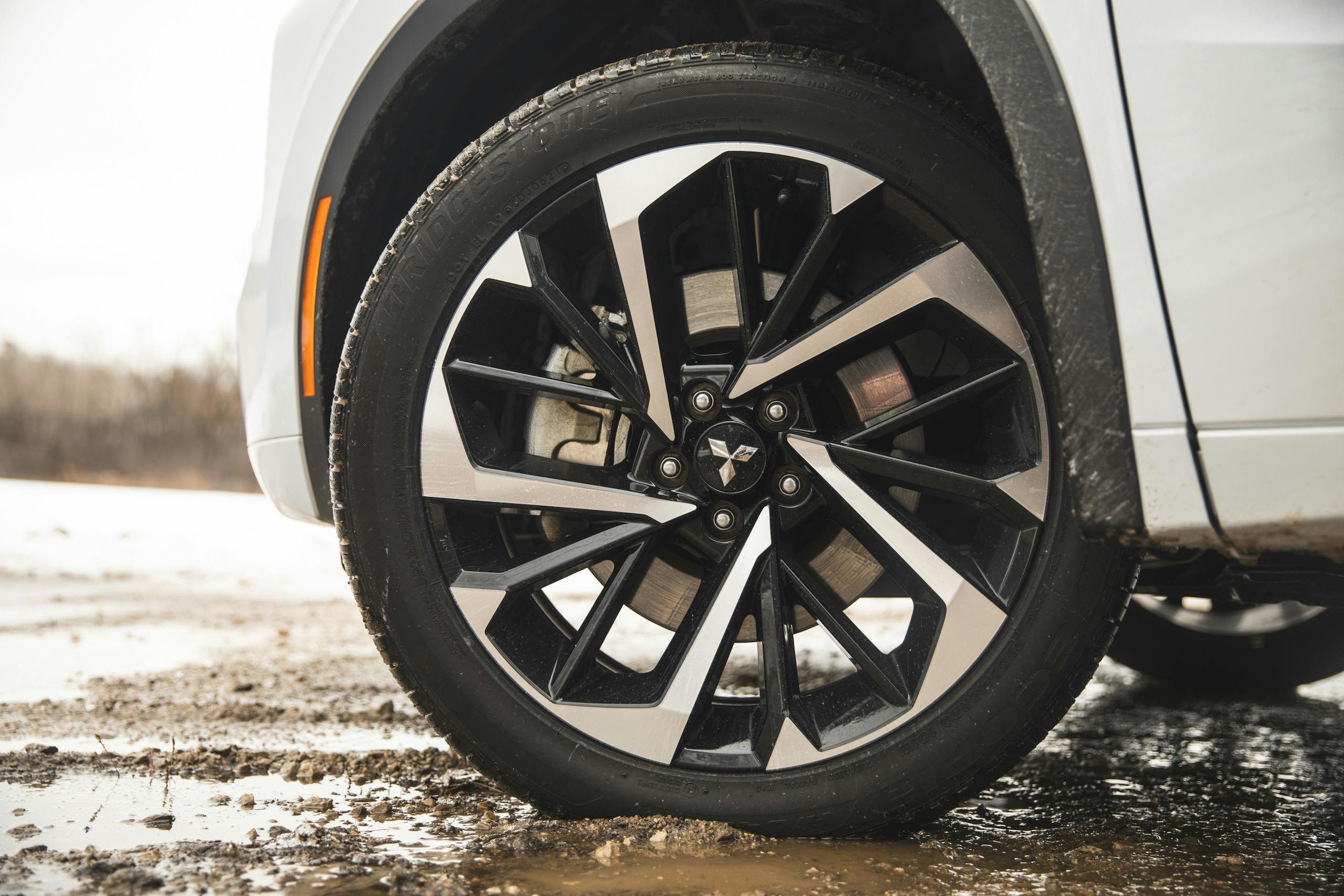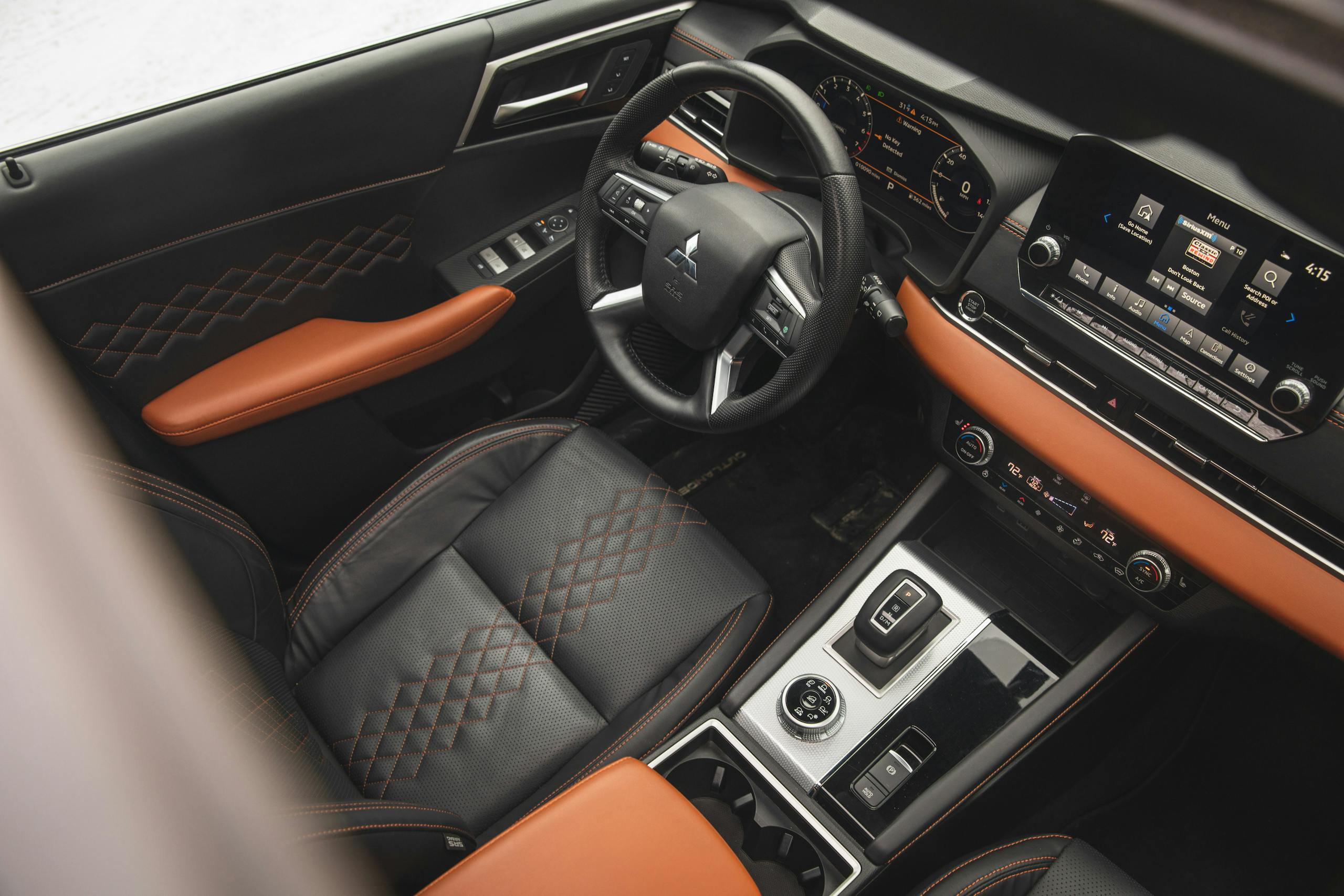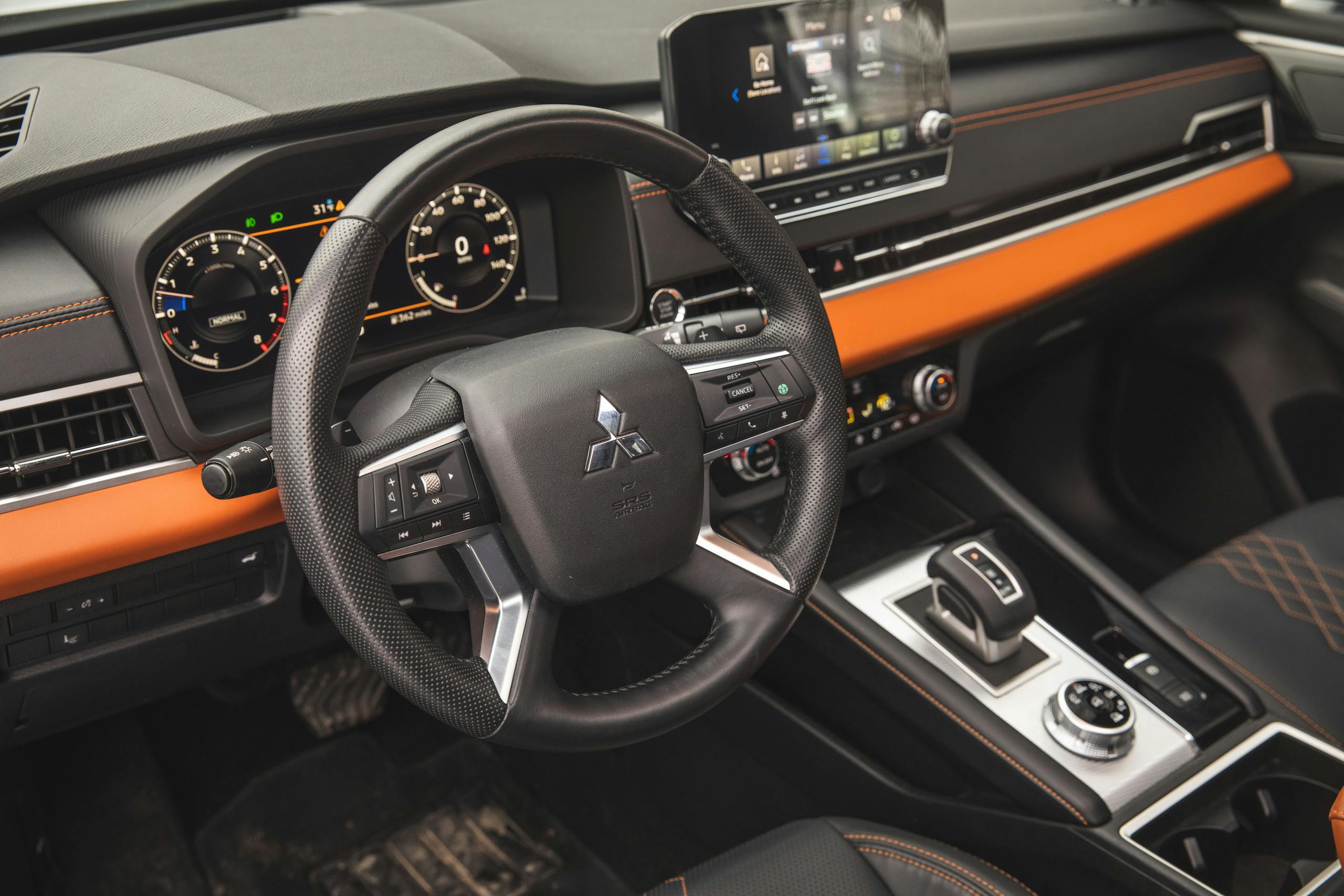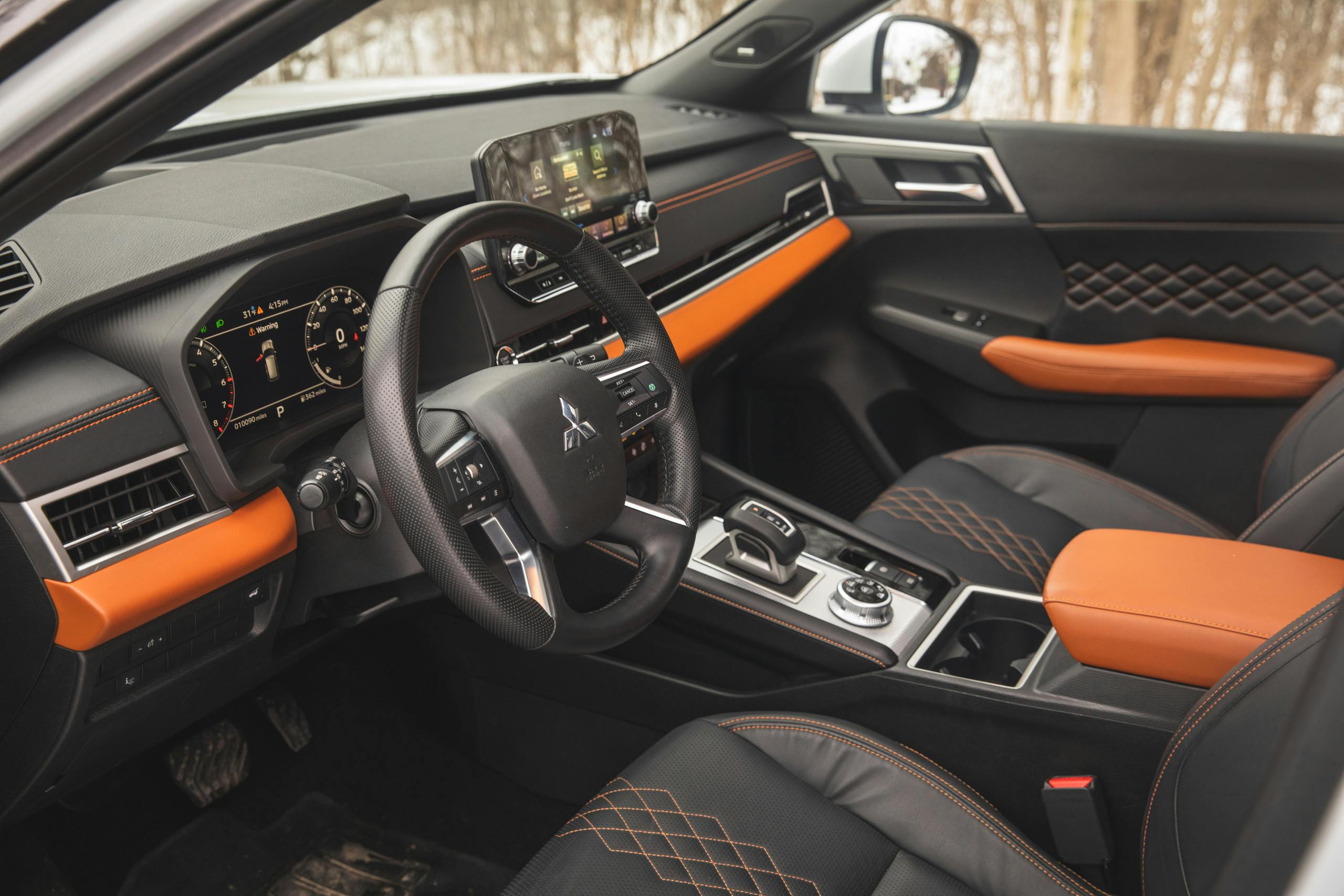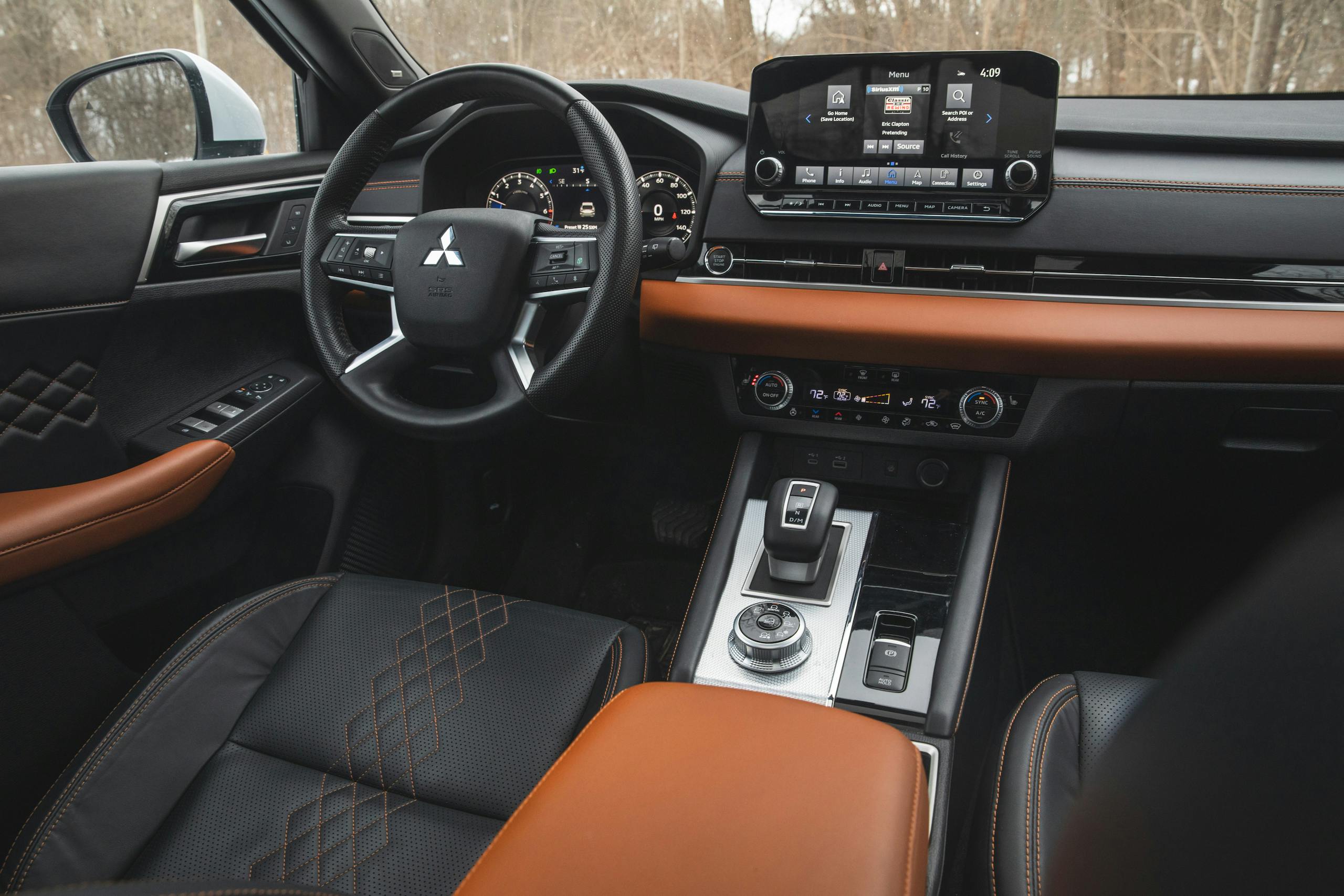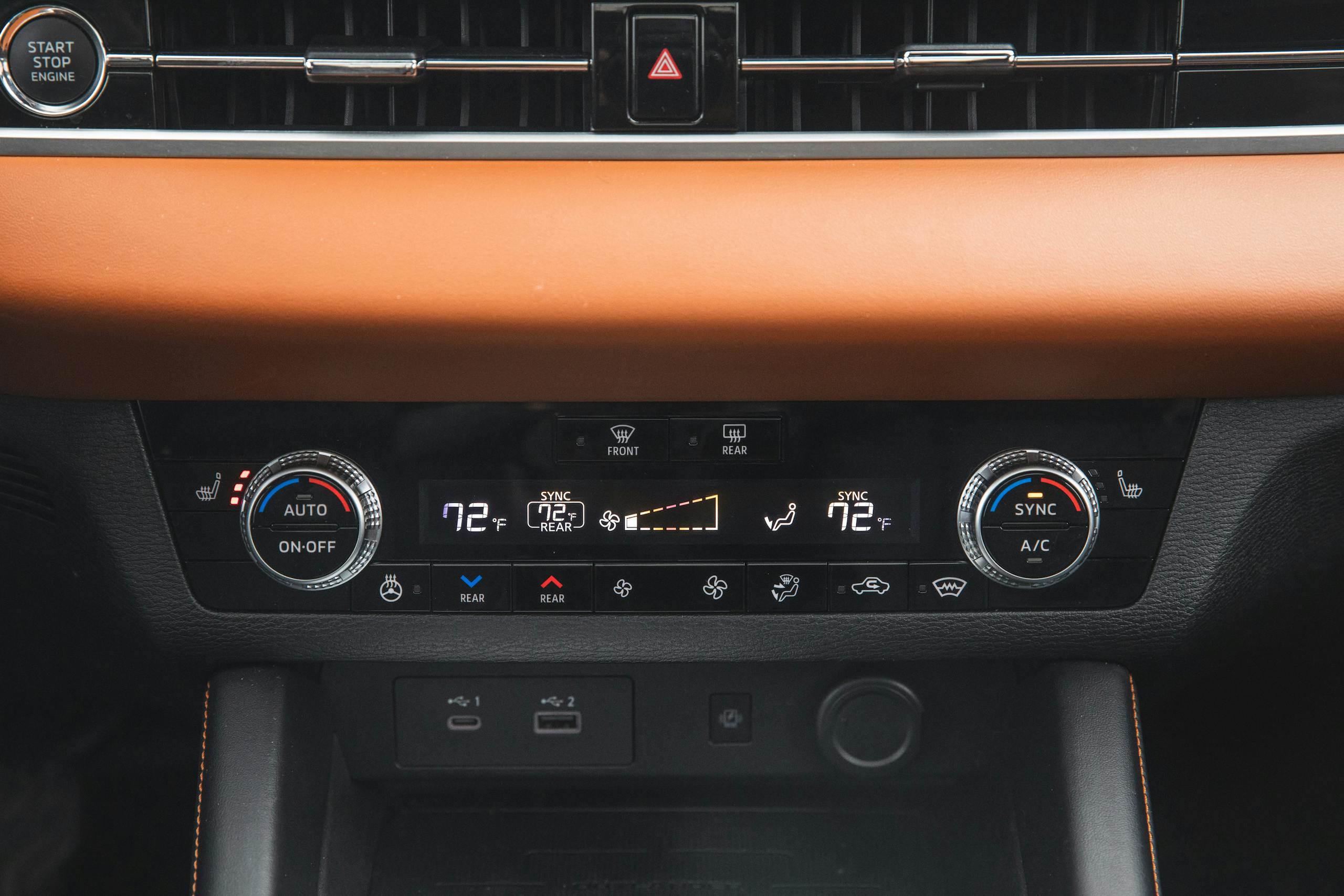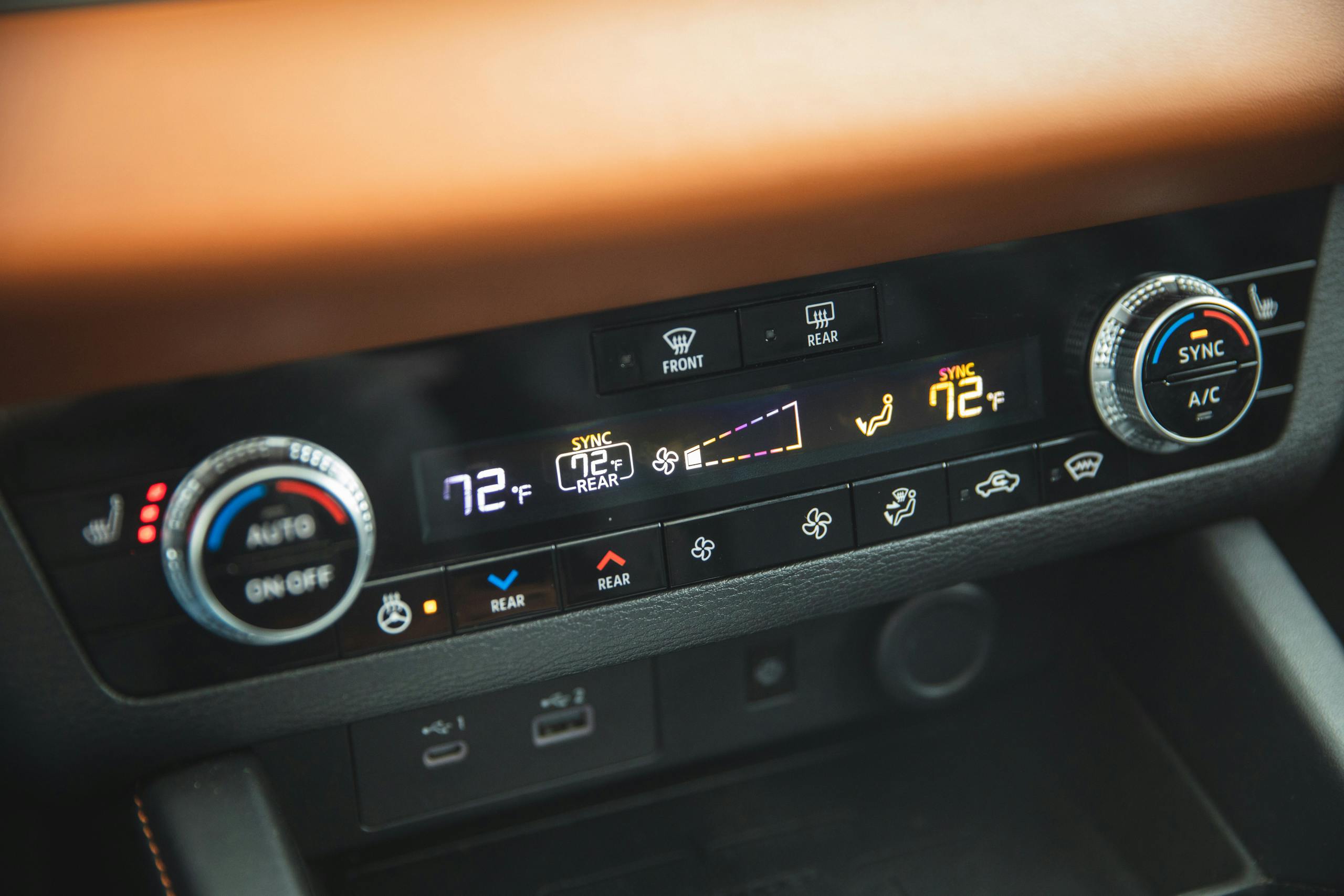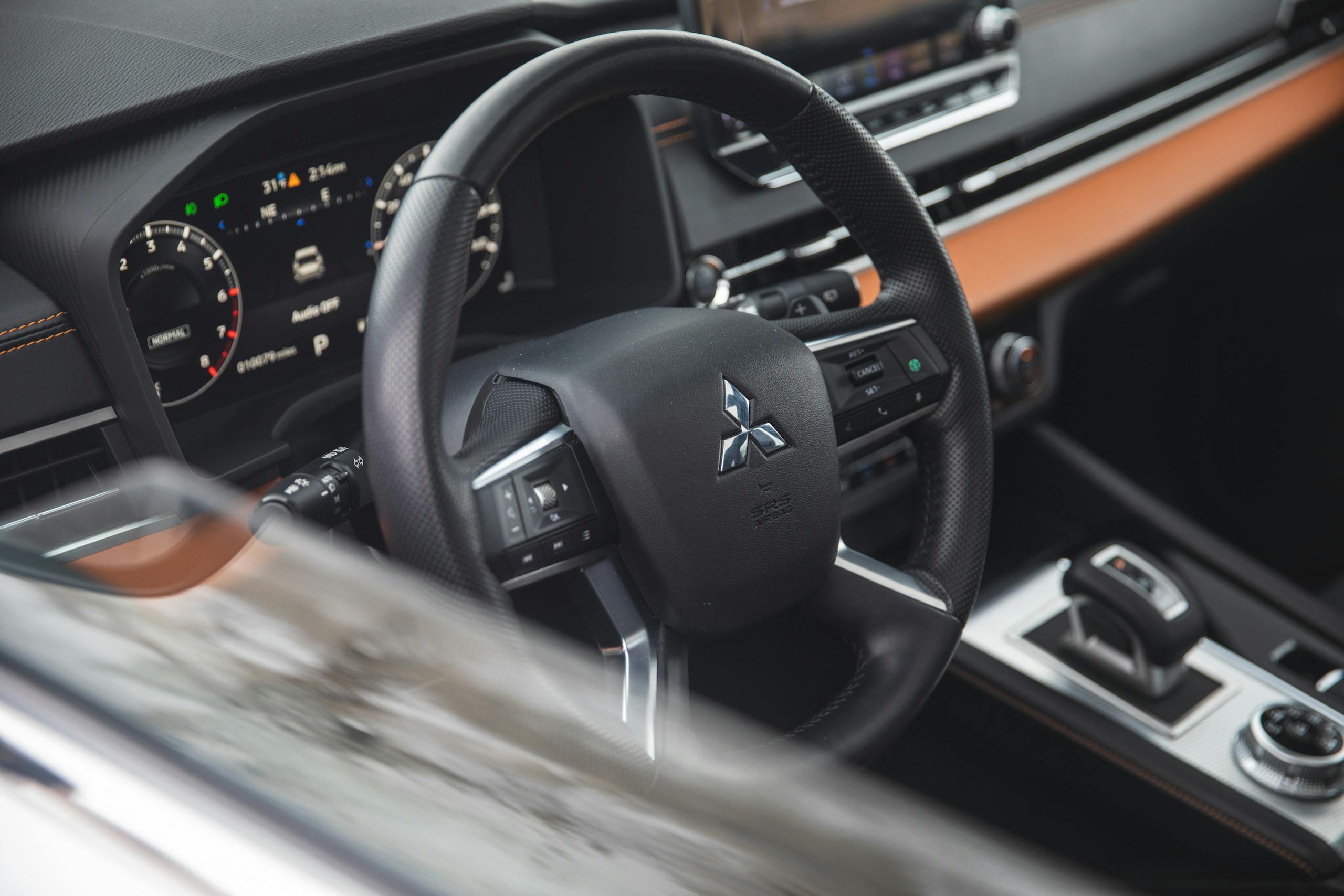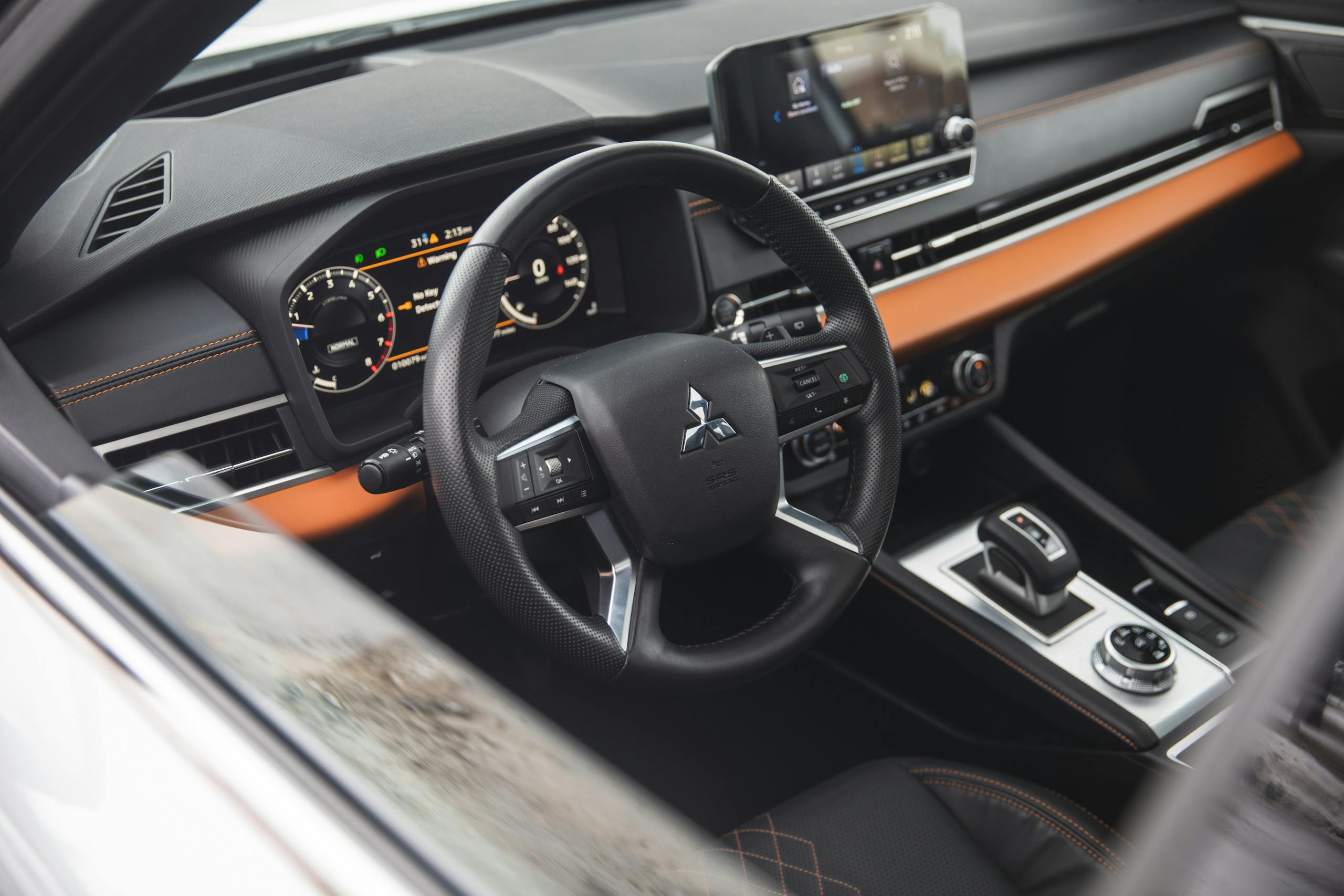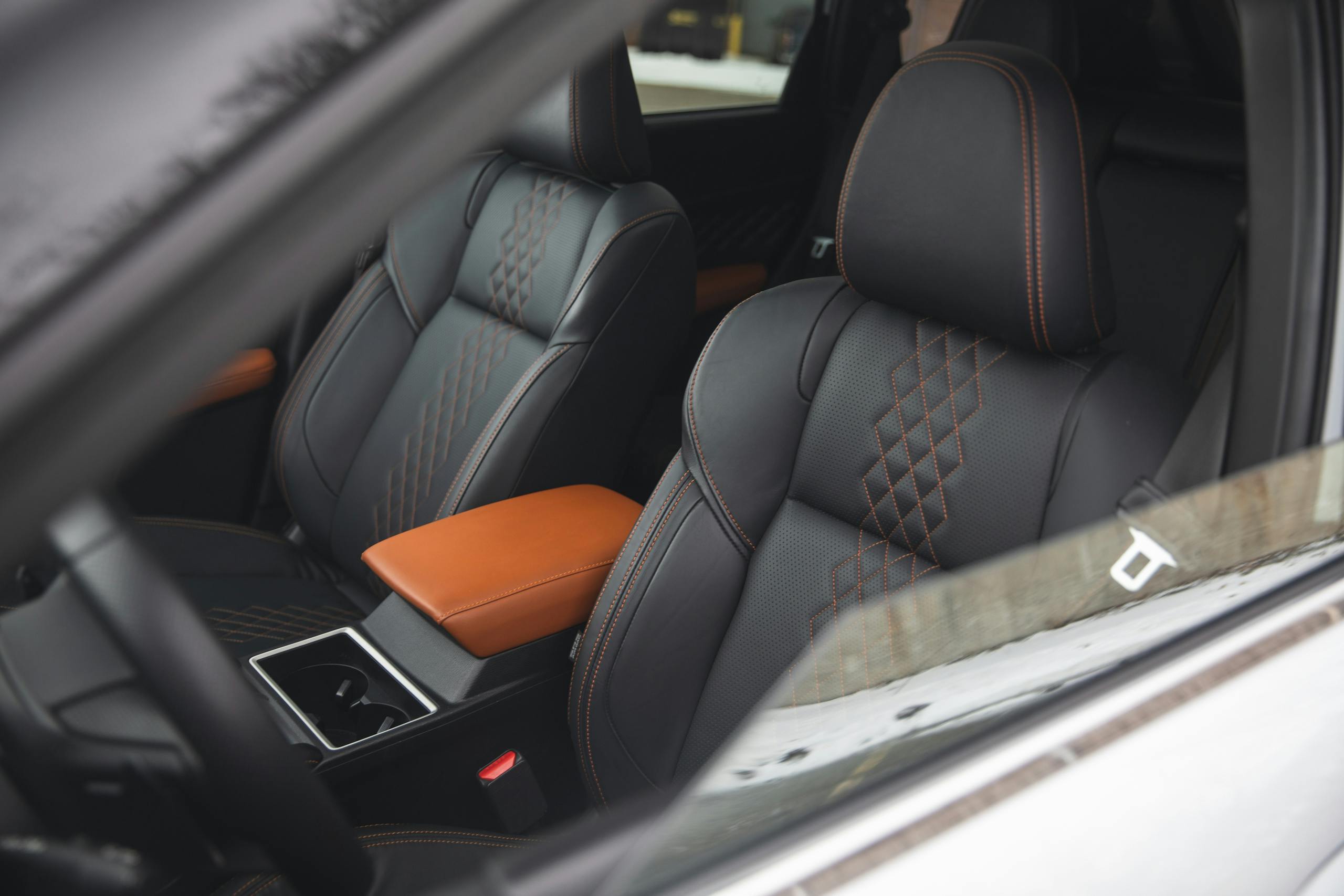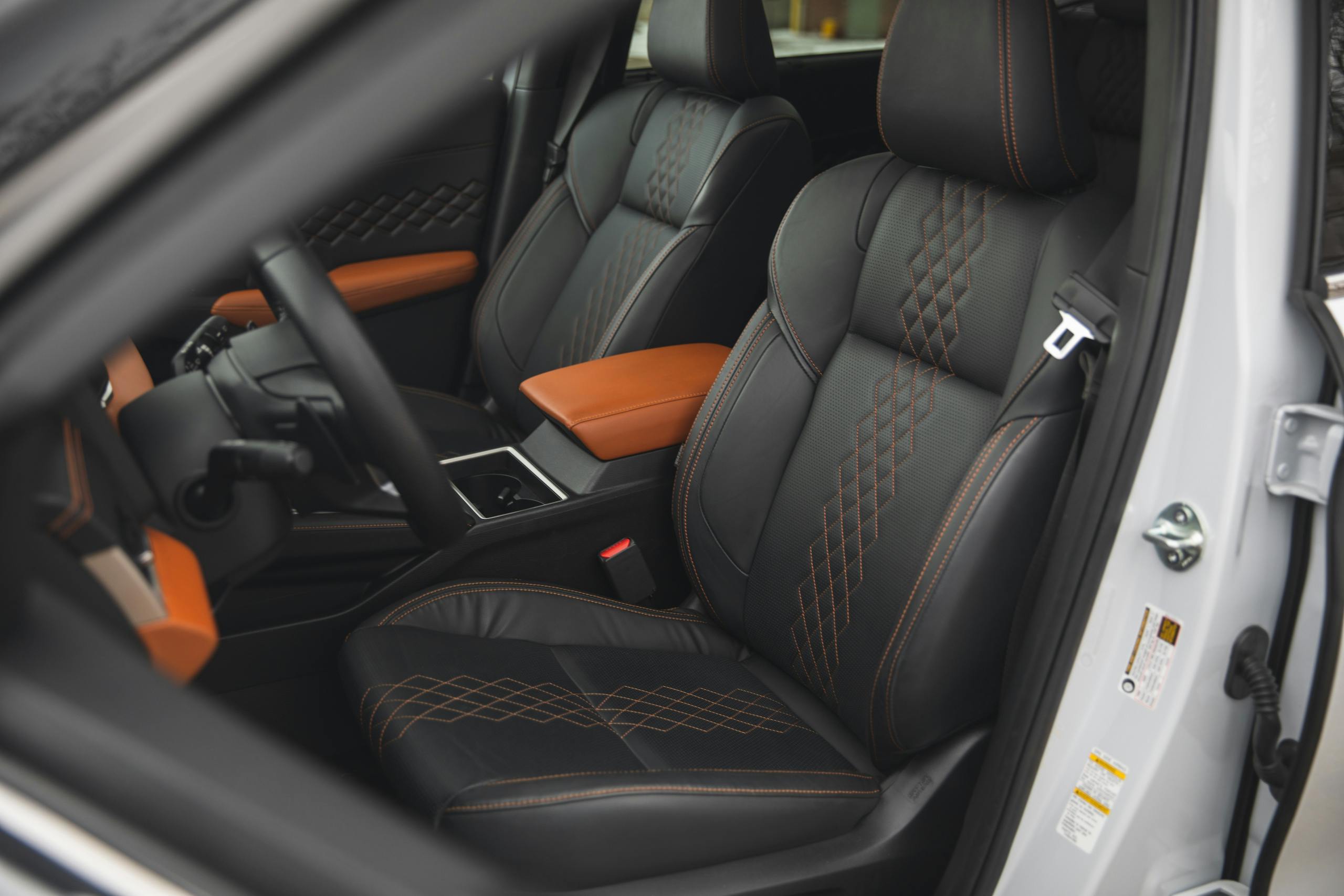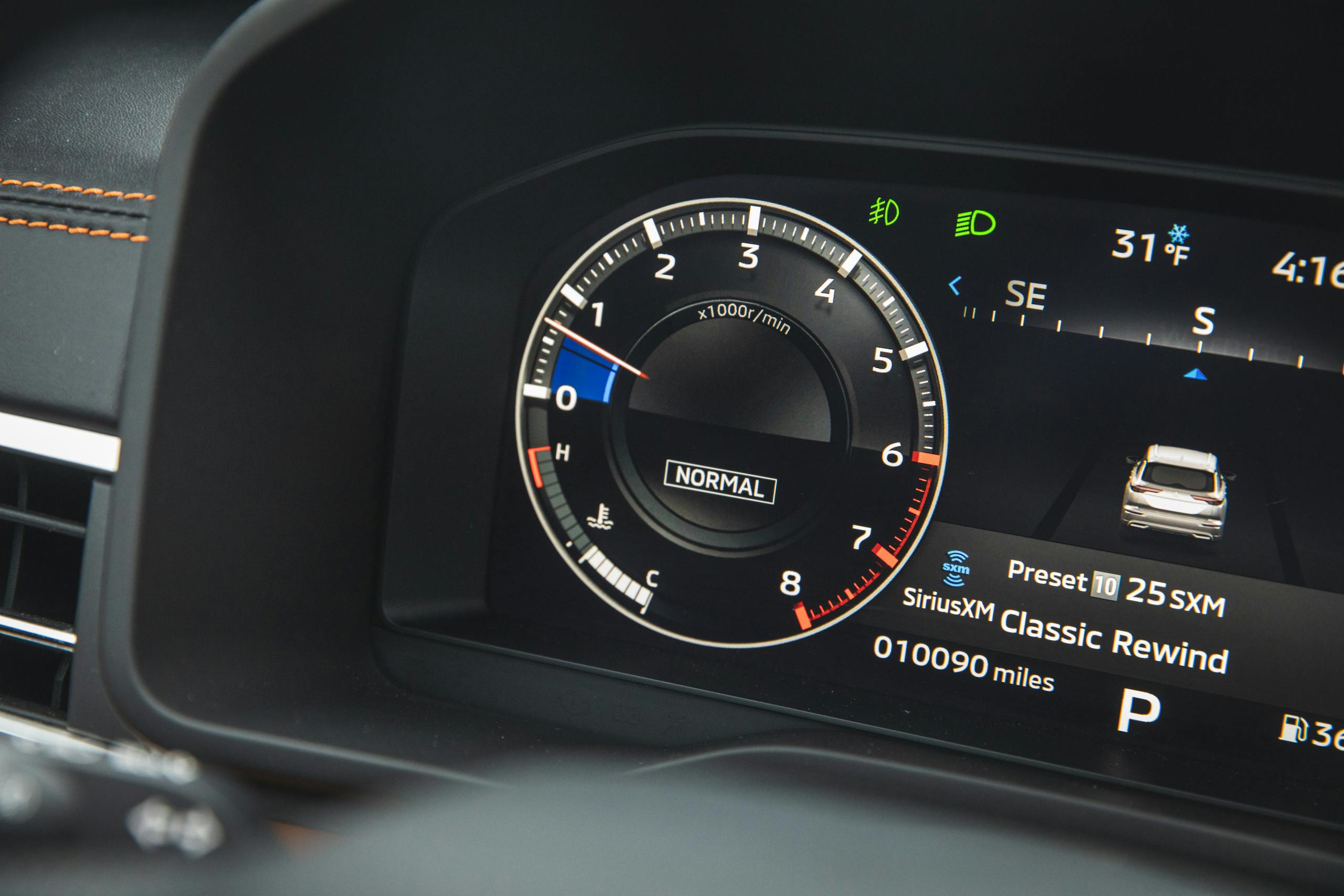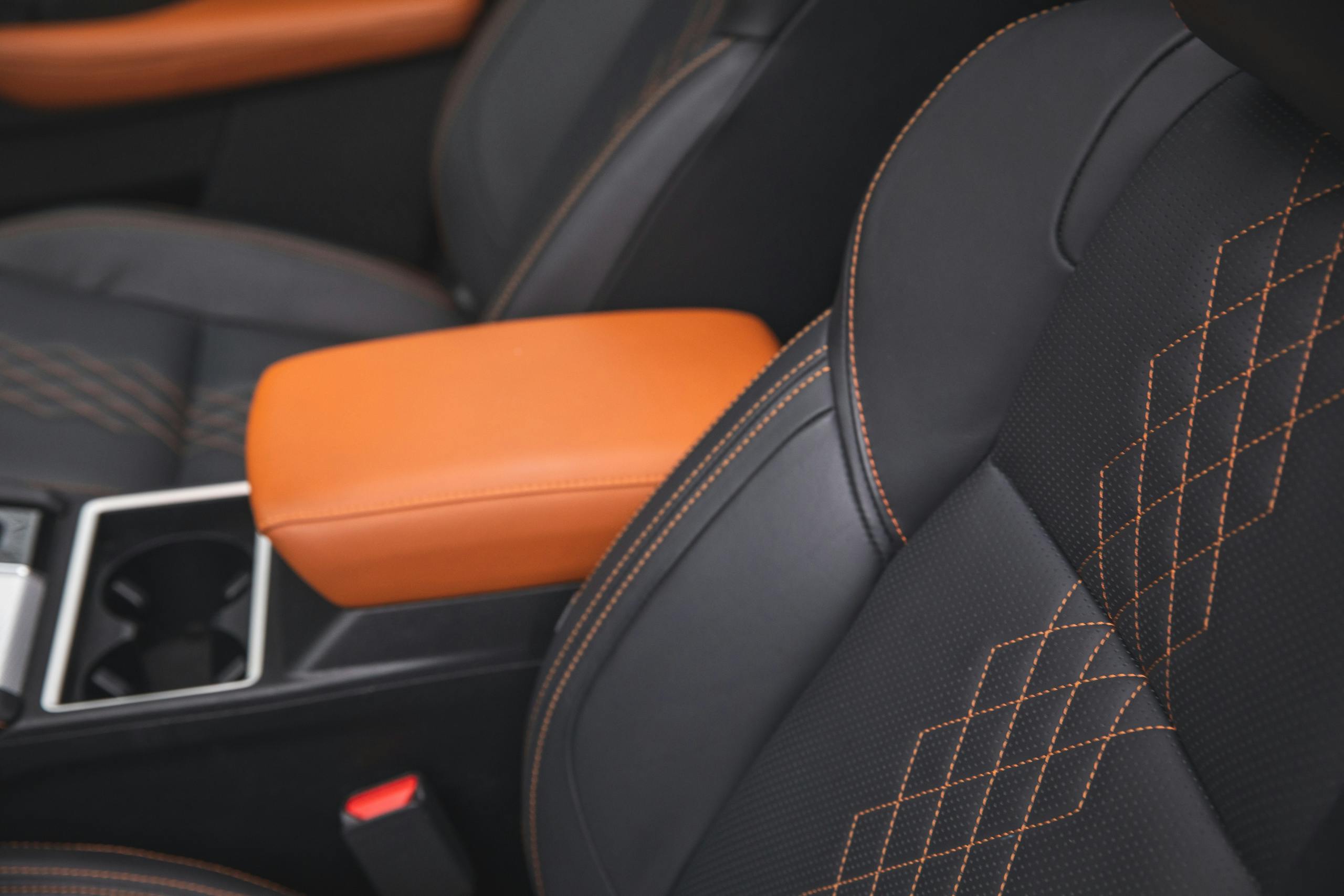Media | Articles
2022 Mitsubishi Outlander SEL 2.5 S-AWC
Mitsubishi Motors North America has swung between bliss and blunder since its founding in 1981, but rising sales from 2014 through 2019 suggest that the company is finally figuring out how to succeed in the U.S. Part of its recovery is due to a narrowing of intention: No longer is it partnering with domestic brands to build spicy front-drive coupes, as it did in the ’90s, or turning out a tuner-friendly hot hatch to rival Subaru’s WRX STI. (Or trying to sell models with a 0 percent down, 0 percent interest, and 0 monthly payments for a year. That didn’t end well.) The 2022 Outlander, newly rehauled for its fourth generation as of this year, proves that Mitsubishi knows which kind of vehicle Americans want most—a midsize SUV—and can execute such a product competently.
Though it is no longer partnering with U.S.-based manufacturers, and is a bit player by volume, Mitsubishi still cares about the American market. The global company of Mitsubishi Motors is tied closely another major U.S. player—Nissan—thanks to an alliance made in 2016 that also includes Renault. It’s the first Mitsubishi to ride on Nissan’s global CMF-C/D architecture, a platform shared on this side of the Atlantic with the Nissan Rogue. However, the U.S-market Outlander is not built alongside the Rogue in Tennessee but imported from Okazaki, Japan. Even its 2.5-liter turbo four-cylinder engine and continuously variable transmission are built in Japan, despite their design being identical to that of the Rogue. Mitsubishi Motors is generally courting higher-profit, less-competitive segments, yielding North America to Nissan and China to Renault, but the arrival of an all-new fourth-gen Outlander on U.S. shores proves that Mitsubishi higher-ups want a presence here.
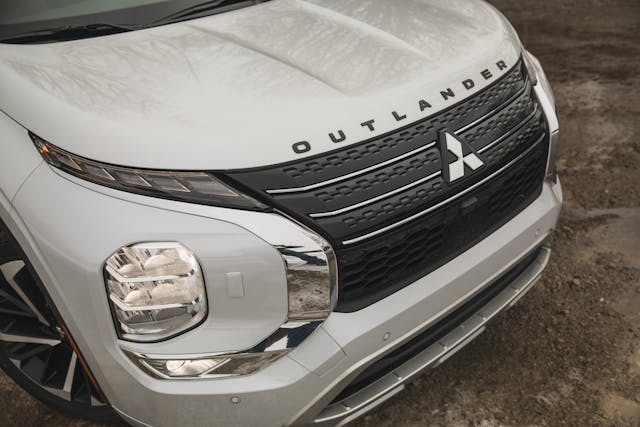
We tested the highest-spec Outlander in the five-trim lineup, an all-wheel-drive SEL with the Touring Package that rang in at $38,590 with destination. (The GT trim, which brought a 224-hp V-6 in 2020, is now gone, as is the mid-tier Limited Edition, which has been replaced by the Black Edition.) The Touring Package adds a snazzy two-tone leather interior, a sunroof, a 10.8-inch head-up display, a ten-speaker Bose stereo, and a heated steering wheel for a grand $2700.
Opt for any 2022 Outlander, and you’ll get a fresh-looking vehicle with significantly updated tech compared to the 2020 model (Mitsubishi offered only the Outlander PHEV for 2021.) Its funky fascia with its four headlights and chrome boomerangs may be too extroverted for some, but the change is welcome in a vehicle that has rolled on since 2015 without a major visual upgrade. The upper headlights and the taillights are squinter and more aggressive. The blacked-out A pillar is right on trend, and the sides now wear angular contours. It’s also a wider, taller vehicle than its predecessor—two inches broader and 1.5 inches higher.
The 2022 model’s cabin also wears a much needed and well-executed overhaul. The dash sweeps across in one simple, horizontal line, with a nine- or eight-inch LCD touchscreen perched atop it and air inlets arranged neatly below. The controls aren’t fussy or high-tech, like VW’s haptic sliders; like Hyundai and Kia, Mitsubishi keeps climate control and volume knobs simple and analog while creating aesthetic drama with upholstery color and material texture: Our SEL sports real leather (the black and tan scheme is only available on this trim), with plenty of quilted detailing. The textured metal accents are real aluminum. A 12.3-inch, fully digital instrument cluster is available behind the four-spoke steering wheel in all models above the base ES, which makes do with a 7-inch display sandwiched between an analog tach and speedo.
Marketplace
Buy and sell classics with confidence

The Outlander offers a single powertrain for its fourth generation. Gone is the GT trim and its 3.0-liter V-6; all 2022 Outlanders come with a naturally aspirated, 2.5-liter four-cylinder that makes 181 hp and 181 lb-ft of torque. Those figures split the difference between the 2020 model’s optional V-6 (224 hp) and default inline-four (166 hp). The only transmission is a continuously variable one, which gives the ’22 Outlander the dubious distinction of first shift-by-wire Mitsubishi in North America.

The Outlander’s on-road persona doesn’t quite live up to the composed interior design. Acceleration from the Rogue’s nasally four-cylinder is adequate, if you suppress the desire to kick the CVT in the shins when merging onto a highway, but the suspension can become ruffled by bumps at moderate to high speed. When cruising down Ypsilanti, Michigan’s main east-west drag between 45 and 50 mph, seams in the (admittedly ill-kept) road cause the car to pitch front to back. Bumps that only affect one wheel, or one side of the vehicle, the suspension can modulate satisfactorily; it is similarly adept cushioning passengers from low-speed potholes. Seams in a highway at 60+ mph, however, quickly become irritating.

Our Outlander did handle slippery conditions decently, even on all-season tires, thanks to its electronically controlled all-wheel-drive system. “Snow” mode retards throttle response to discourage abrupt inputs and proves quite useful traversing a few inches of fresh snow, though it isn’t idiot-proof: Nudge the gas midway through a slushy corner, and you’ll find yourself straight ahead but on the wrong side of the street.

The CVT, for all that enthusiasts snub its design, does succeed in producing a smooth driving experience—our only gripe is that finding neutral requires a delicate touch. Other details which Mitsubishi has executed well: Wireless CarPlay connects rapidly. There’s a handy space to chuck your phone for wireless charging. The adaptive cruise-control is adjustable by single mph increments. The back-up camera’s quality is appropriate for a $38K vehicle.
The Outlander’s only major ergonomic failing is in the third row. It’s tiny, for one—your five-foot-seven authorial head bumped the ceiling—and greatly compromises trunk space to boot. You’d have room for a single military row of Whole Foods bags, perhaps, but don’t expect to pack for a family vacation hosting more than four persons. If your kids are above car-seat age, however, they’ll appreciate the heated second-row seats on the SEL-spec Outlander.

Hyundai and Kia offer far more spacious three-rows for the same price point (Palisade/Telluride), and Japan builds a more elegant looking SUV in the Mazda CX-9, but it’s important to remember that Mitsubishi is content to be a small fish in the U.S. market. The Outlander aims at a lucrative segment full of ravenous buyers, showing that the brand is finally wising up to the American market. Even better, the SUV’s fourth generation is executed well enough to be approached without apology. (For those who are still nervous, consider the warranty: 10 years/100,000 miles for powertrain, five years and 60,000 miles for everything else.) The 2022 Outlander won’t cause VW, Honda, or Toyota a moment’s worth of concern, but for those who are shopping for an off-beat SUV sans Subaru’s puppy-dogs-and-trail-mix aesthetic, the Outlander is worth a look.
2022 Mitsubishi Outlander
Price (base/as tested): $34,940 / $38,590
Highs: Trim, modern, and generally ergonomic cabin. Funky exterior attitude.
Lows: Smurf-sized third row. Pitchy suspension. Soulless powertrain.
Summary: A bougie-on-the-cheap SUV for which neither Mitsubishi nor you need to apologize.

